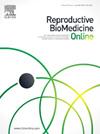What to expect from a ‘standard vaginal progesterone regimen’ in hormone replacement therapy frozen embryo transfer (HRT-FET) – a PRISMA review and meta-analysis
IF 3.7
2区 医学
Q1 OBSTETRICS & GYNECOLOGY
引用次数: 0
Abstract
A mid-luteal serum progesterone concentration below 9–11 ng/ml has been shown to have a negative impact on reproductive outcomes in hormone replacement therapy frozen embryo transfer (HRT-FET), and as no corpus luteum is present, this concentration reflects the absorption of the progesterone products administered. However, the composition and dosing regimens of vaginal products vary. In total, 24 studies were included in this review, selected according to the following criteria: the use of vaginal progesterone products, with serum progesterone concentration and regimens reported; the absence of additional progesterone or progestin treatments; and the use of both prospective and retrospective study designs. Abstracts and full texts published in languages other than English were excluded. A random-effects proportional meta-analysis of five different vaginal micronized progesterone products was performed, including a total of 11,014 patients. Significant differences were found when comparing Cyclogest (800 mg) with Crinone (180 mg or 270 mg) (P = 0.01); Cyclogest (800 mg) with Utrogestan/Progestan (600 mg or 800 mg) (P = 0.03); and Cyclogest (800 mg) with Lutinus (300 mg) (P = 0.01). However, no significant differences were identified between products with an equivalent daily dose. In conclusion, significant differences in serum progesterone concentration exist between different vaginal progesterone products and dosing regimens, which must be taken into account when performing HRT-FET.
求助全文
约1分钟内获得全文
求助全文
来源期刊

Reproductive biomedicine online
医学-妇产科学
CiteScore
7.20
自引率
7.50%
发文量
391
审稿时长
50 days
期刊介绍:
Reproductive BioMedicine Online covers the formation, growth and differentiation of the human embryo. It is intended to bring to public attention new research on biological and clinical research on human reproduction and the human embryo including relevant studies on animals. It is published by a group of scientists and clinicians working in these fields of study. Its audience comprises researchers, clinicians, practitioners, academics and patients.
Context:
The period of human embryonic growth covered is between the formation of the primordial germ cells in the fetus until mid-pregnancy. High quality research on lower animals is included if it helps to clarify the human situation. Studies progressing to birth and later are published if they have a direct bearing on events in the earlier stages of pregnancy.
 求助内容:
求助内容: 应助结果提醒方式:
应助结果提醒方式:


